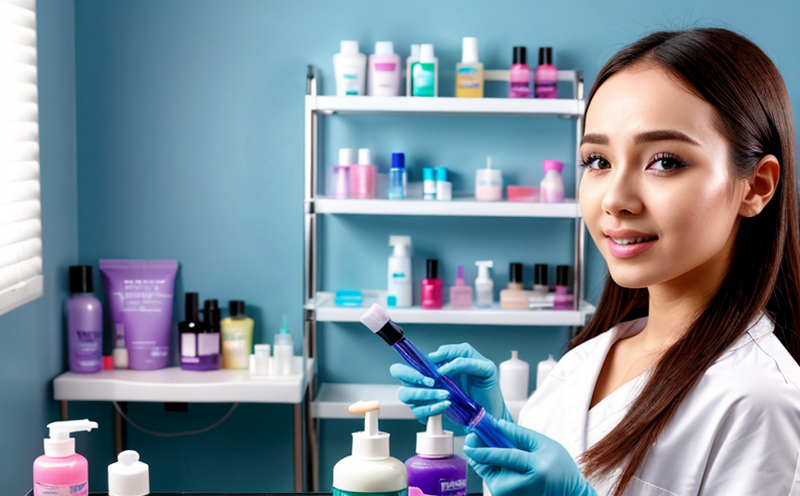USP Antimicrobial Preservative Effectiveness Testing
The United States Pharmacopeia (USP) provides a standardized method for assessing the effectiveness of antimicrobial preservatives in cosmetics and personal care products. This testing ensures that the products meet quality standards to prevent microbial contamination, which is critical for maintaining product safety and efficacy.
In this process, preservative systems are tested under defined conditions to evaluate their ability to inhibit growth of specified microorganisms. The test involves incubating samples at various temperatures and exposure times to simulate real-world storage conditions. Compliance with USP is essential for manufacturers who aim to comply with global regulatory standards.
The testing method aims to mimic the actual use environment, which often includes extreme temperature fluctuations, humidity variations, and potential contamination from external sources. This comprehensive approach ensures that preservatives function effectively under a wide range of conditions, thereby safeguarding product integrity and consumer health.
The USP test is particularly important for quality managers and compliance officers responsible for ensuring the safety and efficacy of cosmetic products. R&D engineers can benefit from this testing to develop new formulations that meet regulatory requirements. For procurement teams, understanding these tests helps in selecting suppliers who adhere to stringent standards.
| Parameter | Description |
|---|---|
| Test Samples | Solution containing the preservative to be tested. |
| Microorganisms | Bacterial and fungal strains specified by USP . |
| Incubation Conditions | Temperature ranges from 20°C to 45°C for various durations. |
| Observations | Visual and microbiological assessments of growth inhibition. |
- This testing is crucial for ensuring product safety and efficacy.
- The method provides a standardized way to assess preservative effectiveness.
- It ensures compliance with international regulatory standards.
Industry Applications
The USP test is widely used in the cosmetic and personal care industry. It helps manufacturers ensure that their products are safe for use by the general public, especially those with sensitive skin or compromised immune systems.
This testing is particularly important for:
- Developing new preservative formulations
- Evaluating existing preservatives
- Ensuring compliance with regulatory standards
The test results are used by quality managers to make informed decisions about product formulation and packaging. Compliance officers rely on these tests to ensure that products meet regulatory requirements. R&D engineers use the data from USP testing to refine their formulations, while procurement teams select suppliers who can provide preservatives that pass this rigorous test.
International Acceptance and Recognition
- The United States Pharmacopeia (USP) is widely recognized globally for its stringent testing standards.
- This method is used by manufacturers in the cosmetic industry to ensure product safety and efficacy.
The USP test is a cornerstone of regulatory compliance, particularly in the United States. However, it also enjoys international recognition, with many countries adopting similar standards or referencing USP methods in their regulations.
The widespread acceptance of this testing method can be attributed to its scientific rigor and consistency. The use of standardized protocols ensures that results are reproducible and reliable, which is essential for the global cosmetic industry.
Use Cases and Application Examples
- Evaluating new preservative formulations.
- Vetting existing preservatives for efficacy.
- Ensuring compliance with regulatory standards.
In this section, we will explore the various use cases and application examples of USP testing in cosmetic microbiology. This method is particularly useful for:
- Developing new preservative formulations
- Evaluating existing preservatives
- Ensuring compliance with regulatory standards





